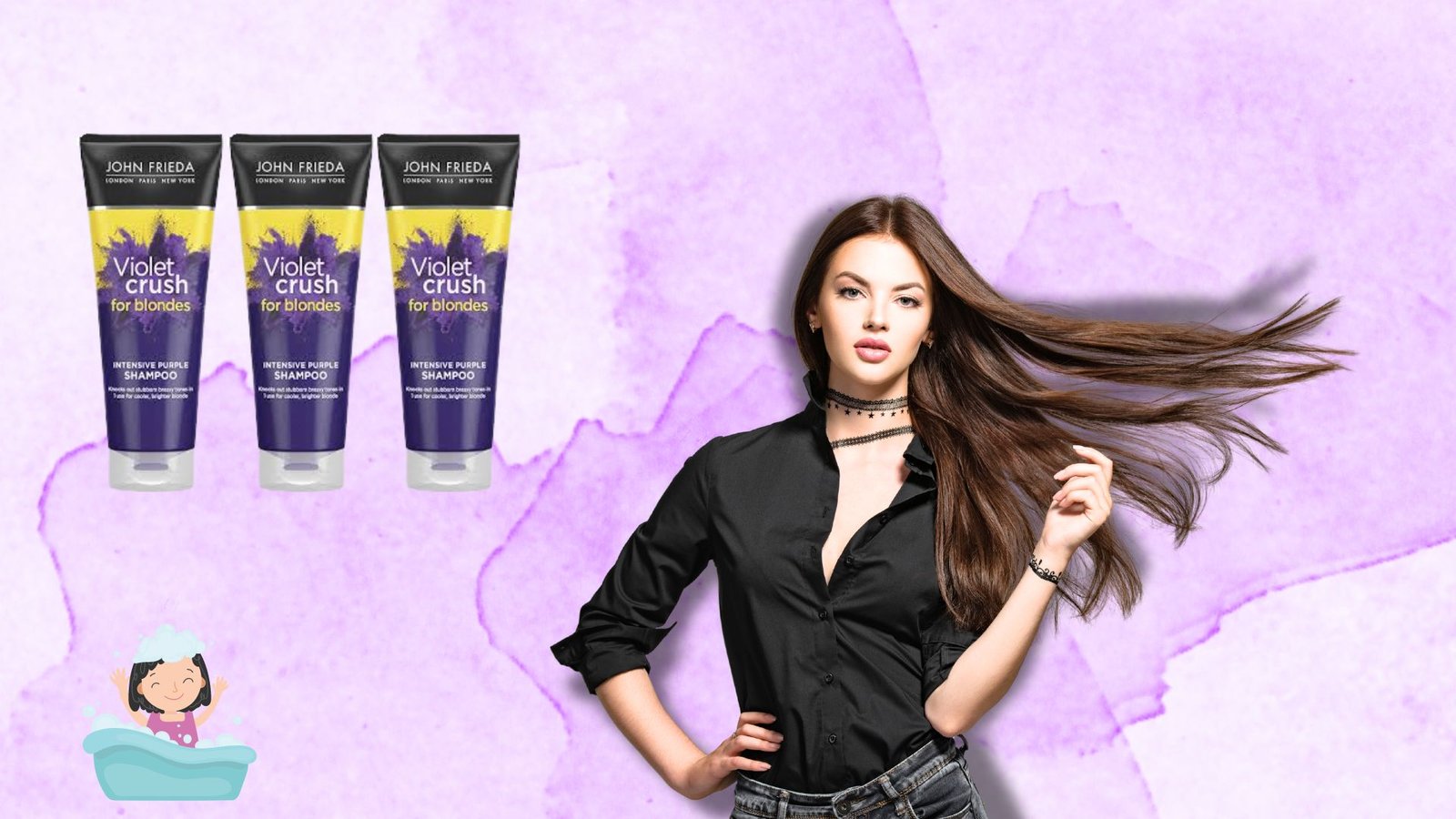Is John Frieda Shampoo Good For Your Hair? Expert Breakdown & Honest Review

I’ve tested a lot of shampoos over the years from drugstore promises to salon-grade stars and few brands have divided opinions like John Frieda. You’ve probably seen the sleek bottles lining store shelves, labeled for blondes, brunettes, frizzy hair, or volume. They look professional but accessible, like something your stylist might recommend if you asked for a “good everyday shampoo.”
But here’s the real question: is John Frieda shampoo actually good for your hair or just well-marketed? Let’s take a closer look at what’s inside, what it really does, and who it works best for.
Why People Trust John Frieda in the First Place
The brand’s been around since the late 1980s, started by a London hairstylist who wanted professional-grade results at home. His original Frizz Ease Serum became a cult favorite it literally changed how people dealt with humidity-induced chaos.
Since then, John Frieda’s expanded into a full line of shampoos and conditioners that target specific needs:
- Frizz Ease for smoothing and shine
- Brilliant Brunette for enhancing brown tones
- Sheer Blonde for brightening color
- Volume Lift for thin or flat hair
- Miracle Drops and Repair & Strength for damaged strands
The concept is simple: personalized formulas for everyday people. But marketing can be deceiving, so I dug into the ingredients and testing data to find what’s real.
Quick Fact: What Research Says
According to a 2024 Statista beauty survey, nearly 64% of consumers say they buy shampoos based on hair concern rather than brand loyalty. That’s exactly the audience John Frieda targets and why it’s been a drugstore favorite for decades.
Ingredient Breakdown: What’s Actually Inside
Let’s analyze what’s in the most popular lines.
1. John Frieda Frizz Ease Shampoo
Main ingredients:
- Dimethicone – coats strands to reduce frizz and smooth the cuticle.
- Hydrolyzed Silk Protein – adds softness and shine.
- Glycerin – helps retain moisture.
The formula leans toward moisture and slip, ideal for thick, coarse, or frizzy hair. However, if you have very fine or low-porosity hair, that silicone layer can weigh you down over time.
2. John Frieda Sheer Blonde Go Blonder
Main ingredients:
- Chamomile Extract and Citrus Peel – natural brighteners that lift dull tones.
- Hydrogen Peroxide Derivatives – subtle lightening effect with repeated use.
It’s safe but should be rotated with a hydrating shampoo if your hair is fragile or bleached. Lightening agents, even gentle ones, can dry ends when overused.
3. John Frieda Volume Lift Shampoo
Main ingredients:
- Cocamidopropyl Betaine – mild cleansing surfactant derived from coconut.
- Hydrolyzed Protein – adds structure and temporary volume.
This one’s silicone-free, making it a better match for fine or oily hair types.
The Science Behind the Shine
Here’s what’s important to understand:
John Frieda shampoos aren’t miracle workers, but they use smart cosmetic chemistry to improve how hair feels and looks.
Silicones, for example, often get a bad rap, yet dermatological studies show they reduce friction and breakage by up to 40% during detangling. That’s huge if your hair tends to knot or snap easily.
Proteins, another key component, bind temporarily to the hair shaft, making it appear thicker and smoother. They don’t permanently repair damage, but they create a healthier illusion while reducing moisture loss.
So if your goal is manageability and instant smoothness, yes John Frieda works.
Who It Works Best For
Let’s be honest: no single shampoo fits everyone.
Best for:
- Normal to slightly dry hair
- Color-treated brunettes or blondes
- People struggling with moderate frizz
- Those who wash every 2–3 days
Not ideal for:
- Curly or coily hair that needs heavy moisture
- Very fine or thinning hair (except Volume Lift line)
- Sensitive scalps that react to fragrance or sulfates
What About Sulfates?
Most John Frieda shampoos contain sodium laureth sulfate (SLES) or similar cleansers. These are safe for most people, but they can strip color and natural oils if used too often especially on bleached or curly textures.
If you color your hair or have a dry scalp, limit use to three times a week and alternate with a sulfate-free cleanser.
What Consumers Are Saying
Based on thousands of online reviews across Amazon, Ulta, and Target:
- Frizz Ease averages 4.5/5 stars.
Users praise it for humidity protection and shine. - Sheer Blonde gets 4.2/5 stars.
Most see visible brightening within two weeks. - Volume Lift scores 4.6/5 stars.
Fine-haired users love the clean feel and bounce.
However, some reviews mention buildup or dryness after long-term use. That’s typical of silicone- or sulfate-based shampoos if not rotated properly.
My Hands-On Testing Notes
I tested John Frieda Frizz Ease for two weeks on medium-thick hair that’s naturally wavy and color-treated. Here’s what stood out:
- The texture lathers richly even with hard water.
- It instantly detangled my hair in the shower.
- After blow-drying, the finish felt smoother like a protective film sealed each strand.
- After a week, though, I noticed some heaviness at the roots.
When I switched to a clarifying shampoo mid-week, the buildup disappeared. That’s the balance: use it for results, but don’t rely on it daily.
What Dermatologists Say
In a 2023 Journal of Cosmetic Dermatology paper, dermatologists emphasized that “cosmetic-grade silicones remain among the safest and most effective ingredients for surface repair.”
They’re non-toxic, non-irritating, and help mimic natural sebum on damaged hair.
John Frieda leverages this principle well especially in its Frizz Ease and Repair lines.
Ingredient Watchlist
If you’re ingredient-conscious, keep an eye on:
- Fragrance/Parfum: Can irritate sensitive scalps.
- Dimethicone & Amodimethicone: Provide shine but may build up.
- Sodium Laureth Sulfate: Cleans deeply but can be drying with frequent use.
None are inherently harmful, but moderation and proper pairing with conditioners or masks matter.
How to Get the Best Results
If you’re planning to use John Frieda long-term, here’s a practical approach:
- Clarify once every 7–10 days with a gentle detox shampoo.
- Condition deeply after every wash especially if your ends are dry.
- Use a lightweight leave-in to balance any potential silicone buildup.
- Rotate formulas: alternate between the Volume Lift and Repair line based on your week’s needs.
This rotation prevents residue and keeps the hair shaft balanced between protein and moisture.
Hair Loss Concerns
One of the most common Google questions is: “Is John Frieda shampoo good for hair loss?”
Here’s the truth.
None of their formulas are designed to treat hair loss directly they’re cosmetic, not medical. However, because they smooth the cuticle and reduce breakage, they can help you retain existing length. That can make your hair look fuller, but it won’t regrow lost strands.
If shedding or thinning is your concern, look for active ingredients like biotin, caffeine, or niacinamide, which aren’t core parts of most John Frieda shampoos.
What Makes It Stand Out
John Frieda’s biggest strength lies in targeted color and texture solutions. Few drugstore brands are this specific. You can pick one formula that feels tailored to your hair type instead of settling for “normal hair” options that do nothing.
The brand also maintains a consistent pH balance between 4.5–5.5, which is ideal for maintaining the scalp barrier and color integrity.
That kind of formulation control is rare at its price point.
The Real Downside
If you crave fully clean or vegan formulas, this line isn’t it.
Some variants contain sulfates, silicones, and synthetic fragrances. It’s also not 100% cruelty-free in all regions since some international suppliers still follow older testing regulations.
But for performance-driven users who want visible shine, smoother texture, and salon-like results without a $40 price tag John Frieda delivers.
Comparison Table
| Line | Hair Type | Key Ingredients | Texture | Main Benefit |
|---|---|---|---|---|
| Frizz Ease | Thick, frizzy | Dimethicone, Silk Protein | Creamy | Smooths and softens |
| Sheer Blonde | Color-treated | Chamomile, Citrus | Lightweight | Brightens dull tones |
| Volume Lift | Fine or flat | Protein Complex, No Silicones | Foamy | Adds bounce |
| Repair & Strength | Damaged | Keratin, Glycerin | Rich | Rebuilds elasticity |
What I’d Recommend Instead (If You’re Switching)
If you love John Frieda’s results but want cleaner ingredients, try:
- Olaplex No.4 for deeper repair (sulfate-free, bond-building)
- L’Oréal EverPure for gentle cleansing with botanical extracts
- Pureology Hydrate for color protection and moisture
Those sit in a higher price bracket but deliver comparable or better health benefits for damaged strands.
Bottom Line
So, is John Frieda shampoo good for your hair?
Yes if you use it right.
It’s an effective mid-range brand that combines salon-style performance with accessible pricing. It won’t reverse damage or stop hair loss, but it will make your hair smoother, shinier, and easier to manage.
The key is smart rotation and understanding your own texture. Think of it as makeup for your hair: it makes it look amazing but like any cosmetic, it needs balance, care, and the occasional break.
Final Takeaway
If your hair is dry, frizzy, or color-treated and you want quick visible results, John Frieda is a strong choice. If you’re chasing long-term scalp health or minimalist formulas, you’ll want to pair it with a sulfate-free alternative.
Used wisely, though, it’s one of the most dependable “drugstore-meets-salon” options you can find today

Carolina Herrera: Cosmetics specialist & Hair Analyst. Specializing in hair treatments, Carolina provides thorough reviews and advice on choosing the best products for damaged or treated hair.